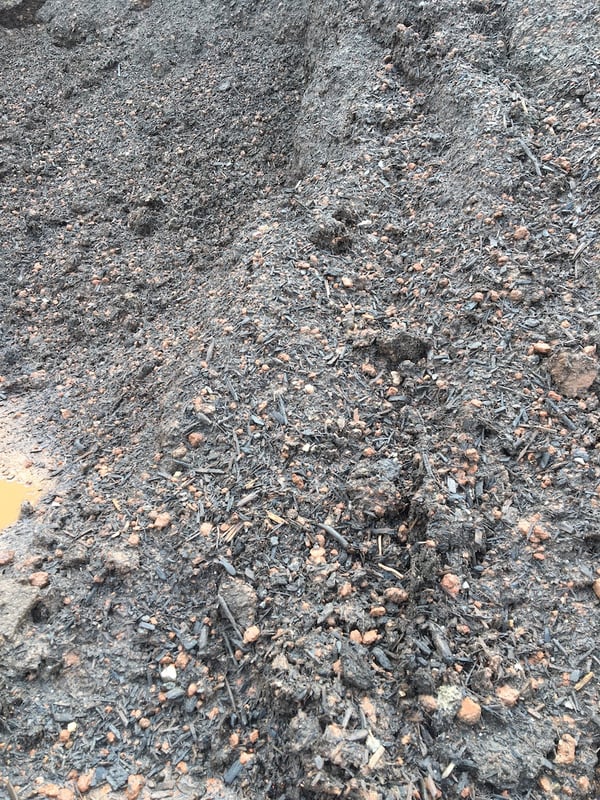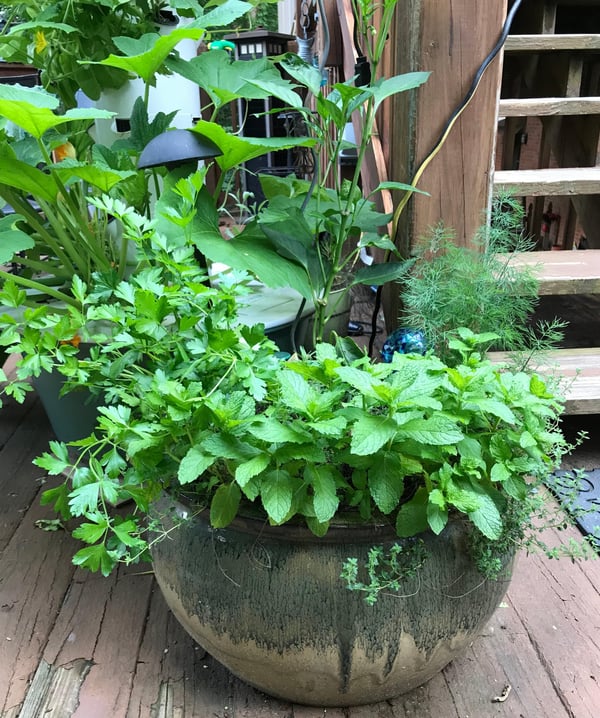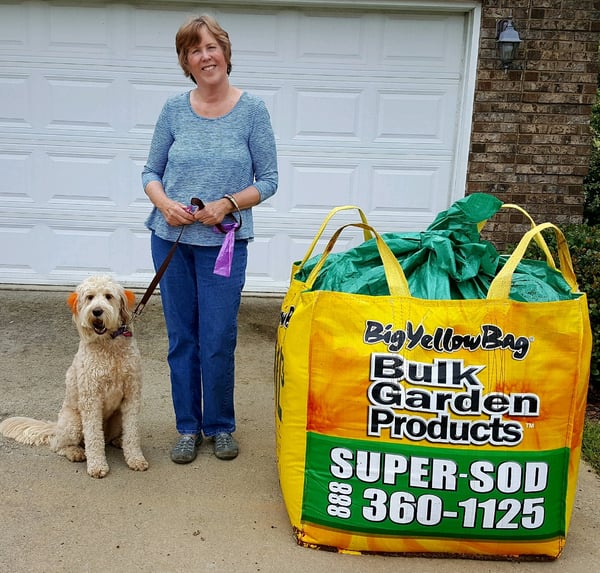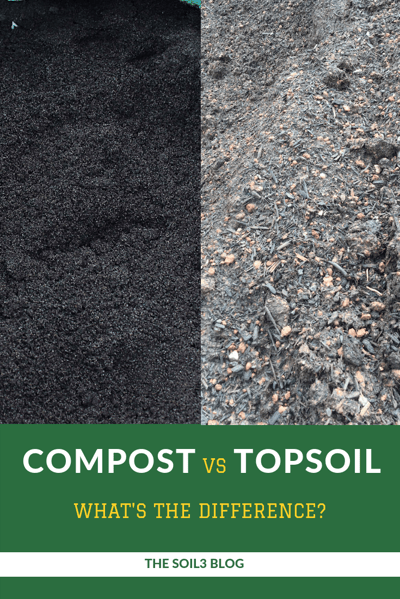You're looking for a healthy start to your new outdoor project and soil is the place to begin. Not only is it the base layer of your landscaping or garden project, soil is the powerhouse ingredient that will affect the performance of your plants for years to come.
You want healthy, stable soil at a fair price, but with terms like compost and topsoil swirling amidst Google searches, I understand the pain of narrowing down which quality ingredient you require. We’ll help you decide between topsoil and compost for your lawn and garden. You may even need both!
What is Topsoil?
Topsoil is the top layer of any soil above the bedrock and is the most nutrient-rich layer of naturally occurring soil. Topsoil contains organic matter but not as much as your plants will need to grow to their full potential. The higher the percentage of compost in a topsoil, the better the topsoil is for growing great gardens.

Typical topsoil contains local dirt, some organic matter, and sometimes small rocks and woody debris.
What is Compost?
Compost is a combination of natural materials that decompose to become organic matter. Compost contains nutrients that act as natural fertilizer and compost is desirable for improving soil structure, reducing compaction, and improving water retention while simultaneously improving drainage. This gets your native soil “up to snuff” so your plants can thrive. The best compost is humus - organic matter broken down into its smallest particle. Learn about the importance of humus here.
-428326-edited.jpg?width=600&name=Image%20from%20iOS%20(2)-428326-edited.jpg)
Humus compost is dark in color - it looks rich - and is broken down into fine particle sizes.
When Should I Use Topsoil?
Bulk topsoil by the truckload is typically earth taken from building sites or fields and it’s sometimes combined with organic matter to give it nutrients. Whether full of clay or sand, this stuff is made for building up soil height to a desired level or grade.
It may have a little compost that will decompose over time, but the sand and clay are there to stay. Building a bed up to your desired height before planting flowers and shrubs? Leveling the spot where you just removed a large tree? Purchase bulk topsoil – then incorporate compost to create a first-rate garden soil.
Topsoil will contain weed seeds thanks to the many different ingredient sources and the fact that topsoils aren't heated like compost. You'll see weeds pop up in topsoil and should prepare for that reality when planning out your project.
When Should I Use Compost?
If you don’t need to change the grade of the land, but you’re looking to improve the quality of your soil, you’re looking for compost. Thanks to decades of construction and agriculture in the Southeastern US, our soils are longing for nutrients. Let’s get them back in there by mixing compost into our soils!
NCSU in their Organic Lawn Care guide lists the advantages of compost over topsoil as:
- compost has higher nutrient content
- the nutrients are slow release
- compost increases nutrient- and water-holding capacity in soils
- compost improves drainage in compacted soils
- it has a neutral pH around 7
- due to microbial activity, compost offers disease control potential
When planting shrubs, adding flower beds, installing sod, or sowing seed, you should incorporate compost into your soil by raking or tilling it in to apply nutrients into your soil.

Above-ground gardening, however, is a different story. Whether you’re constructing raised garden beds or filling a flower pot for your patio, you may plant directly into Soil3 humus compost. Soil3 is a nutritious blend that provides your container plants with all they’ll need for a healthy growing season.
Soil3 is free of weeds because every windrow of compost is cooked to 165 degrees to ensure any weed seeds are killed off, making it ideal to plant in containers without fear of pesky unwanted plants sprouting up.
How Do I Find Quality Topsoil?
Topsoil isn’t held to specific industry standards or regulated by the state, so it’s important to ensure the quality of the product. The best way to do this is by going to look at (and even feel) topsoil before purchasing it. Quality topsoil has compost and organic matter mixed in sufficiently with the sand or clay. It won’t contain too many rocks or sticks, and the amount of debris should be minimal.
How Do I Find Quality Compost?
Finding compost that meets your needs can also be a little bit tricky. To ensure the health of your plants, any compost you purchase should contain controlled ingredients free of persistent herbicides that create killer compost.
As with topsoil, there are some sub-par compost products on the market. We suggest visiting a compost dealer to see and feel the compost that you’re buying. If it’s dark like chocolate cake mix and decomposed into small particles (make sure it doesn’t have a mulch-like consistency), it will hold moisture and feel great in your hands. High quality compost will be free of leaves, sticks, material that is only partially-composted, and trash.
You’ll also want to make sure you can purchase enough compost to meet your needs. You can determine just how much compost you’ll need for your outdoor project by using our compost calculator.
While you may see advertisements for bulk topsoil at any landscape supply store, compost also comes in smaller quantities. If you’re installing a new lawn or starting a few new raised beds, you’ll need to buy bulk compost. If you’re planting a few flowers pots, small bags are all you’ll need and they’re conveniently loaded into a car.
 The cubic yard BigYellowBag of Soil3 humus compost is ideal for large projects or even smaller ones in which you won’t use a full cubic yard. You can tie up the BigYellowBag to preserve your compost for use in later projects.
The cubic yard BigYellowBag of Soil3 humus compost is ideal for large projects or even smaller ones in which you won’t use a full cubic yard. You can tie up the BigYellowBag to preserve your compost for use in later projects.
Plan Your Project
Now that you have the facts and know whether to choose topsoil or compost for your project, let us help! Click here to read all the uses for Soil3 and just how to make the best of this compost in your outdoor projects.

![How To Build a Dry Stack Stone Wall and Backfill with Soil [Video]](https://blog.soil3.com/hs-fs/hubfs/Soil3%20BLOG/finished-dry-stack-stone-wall.png?width=300&name=finished-dry-stack-stone-wall.png)


Did this help you out? Have any questions for clarity? Leave a comment below!